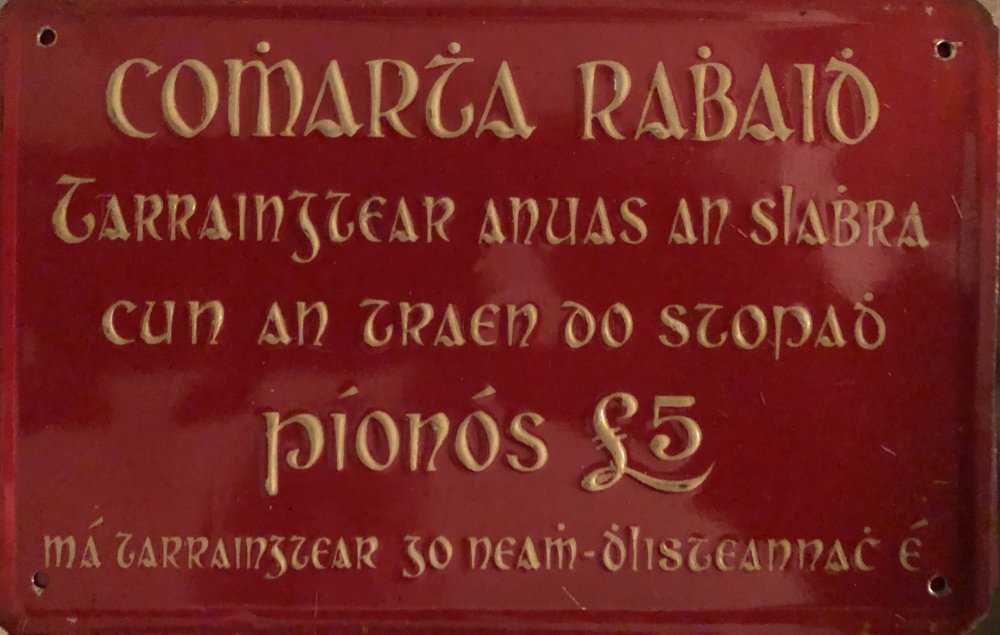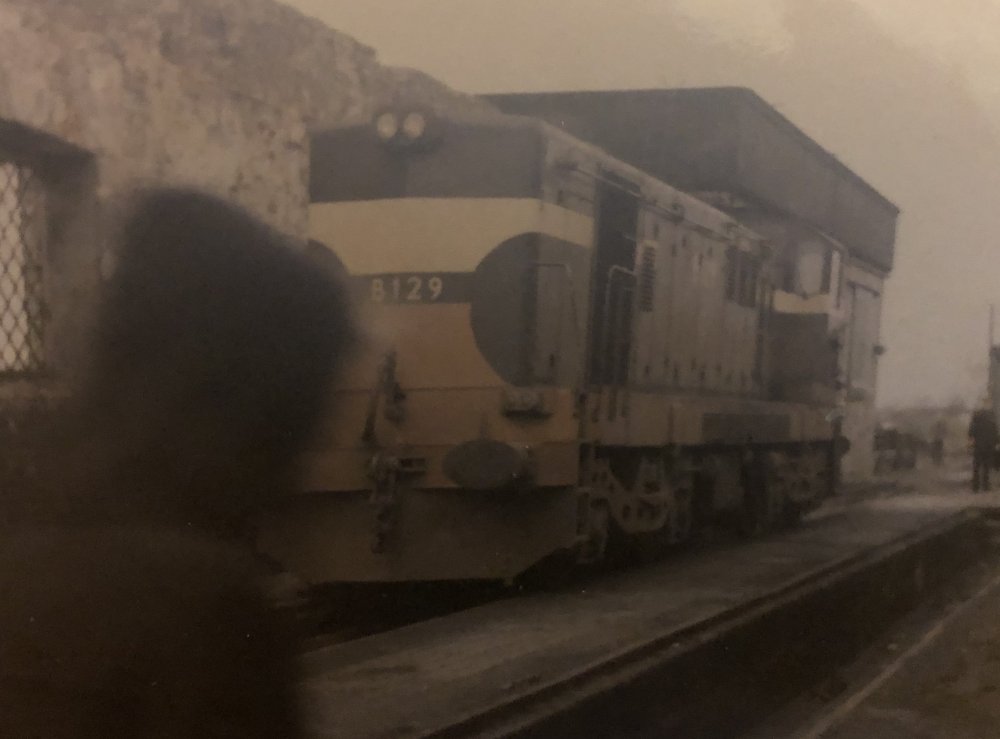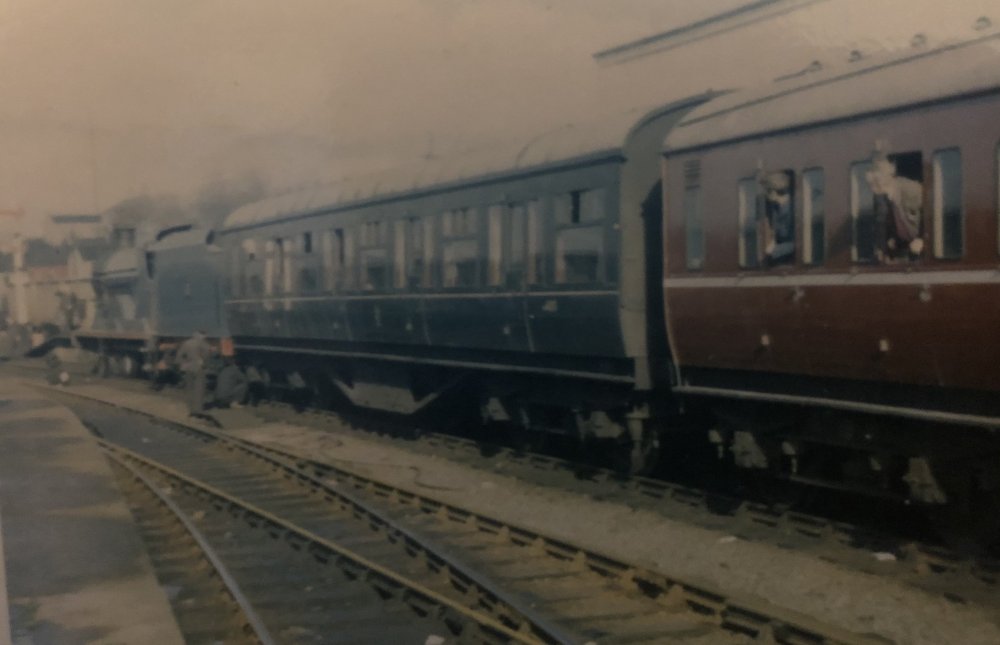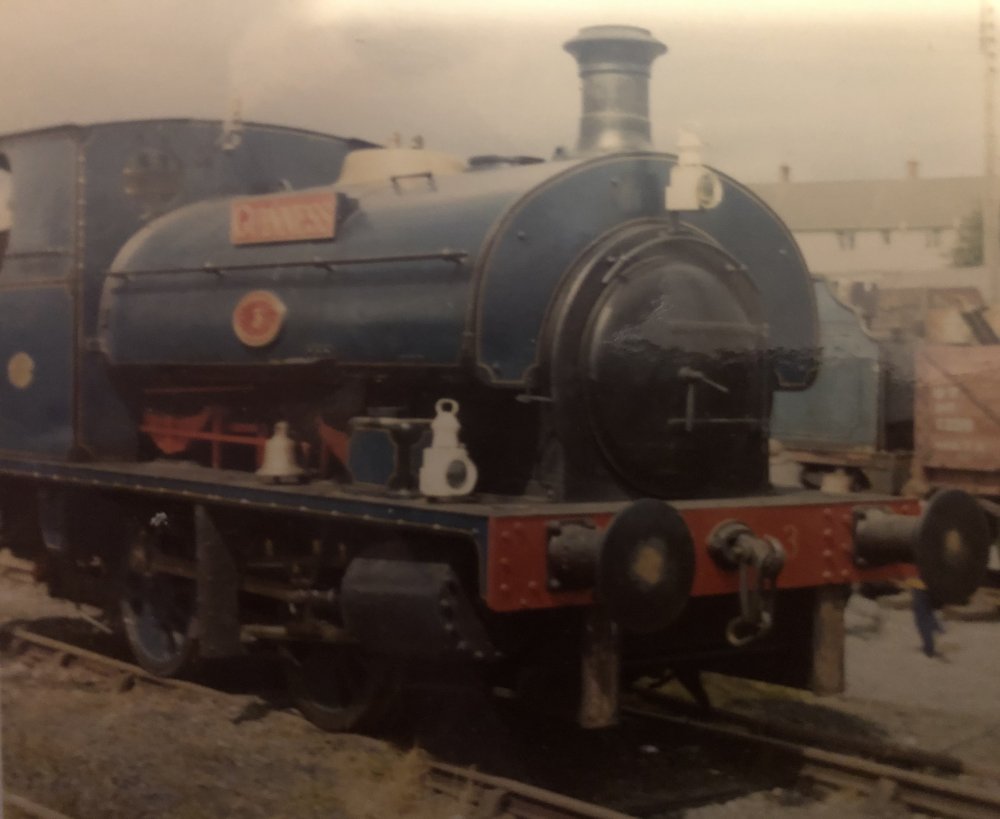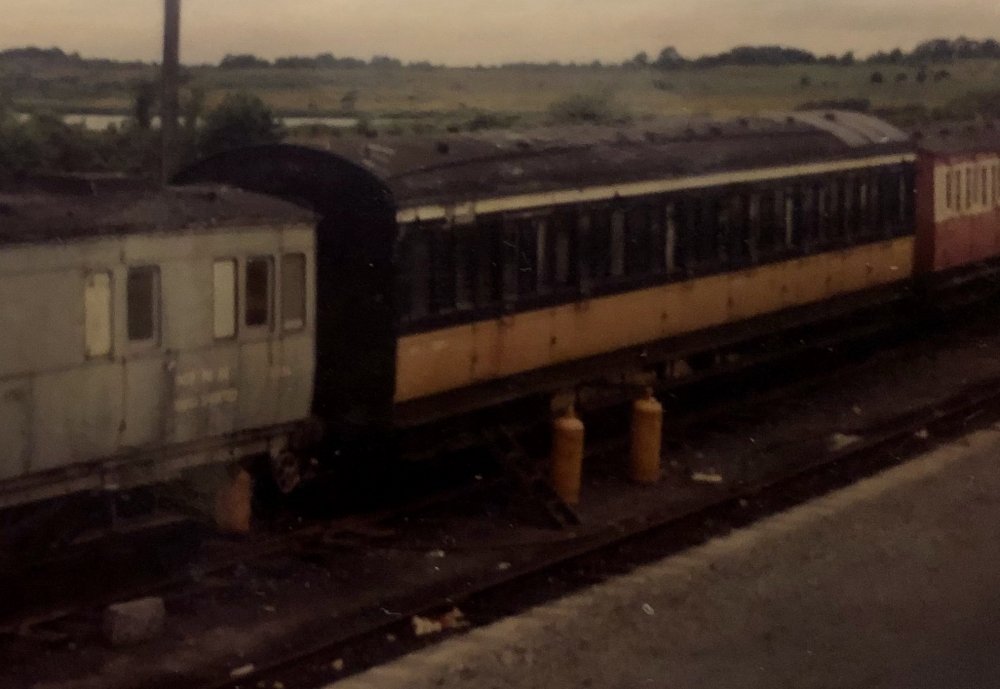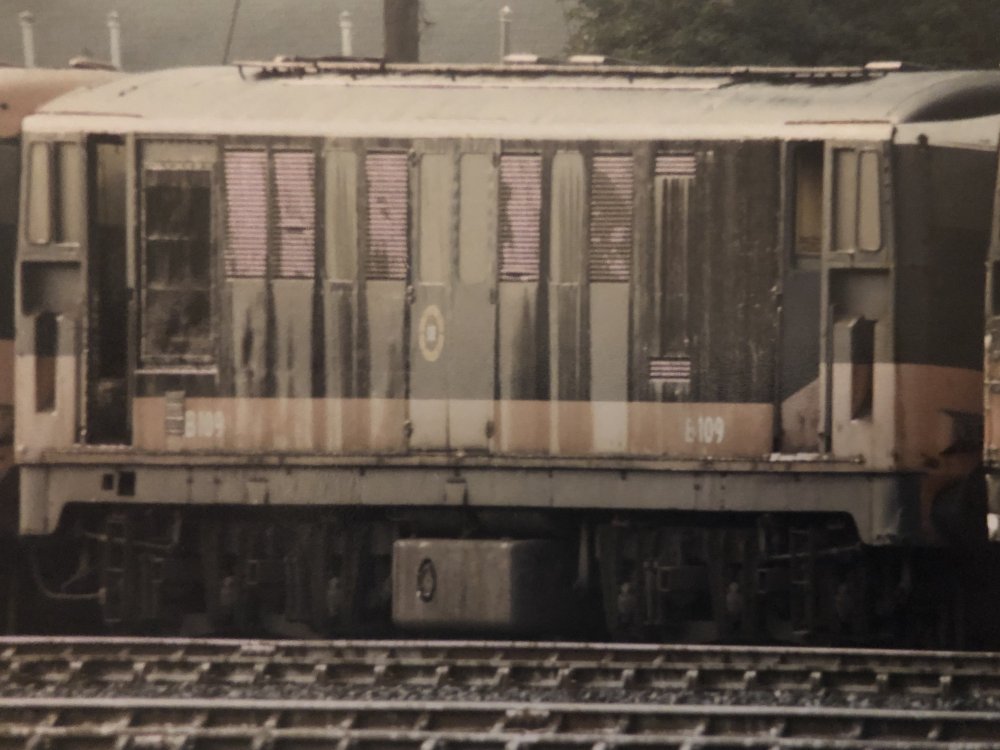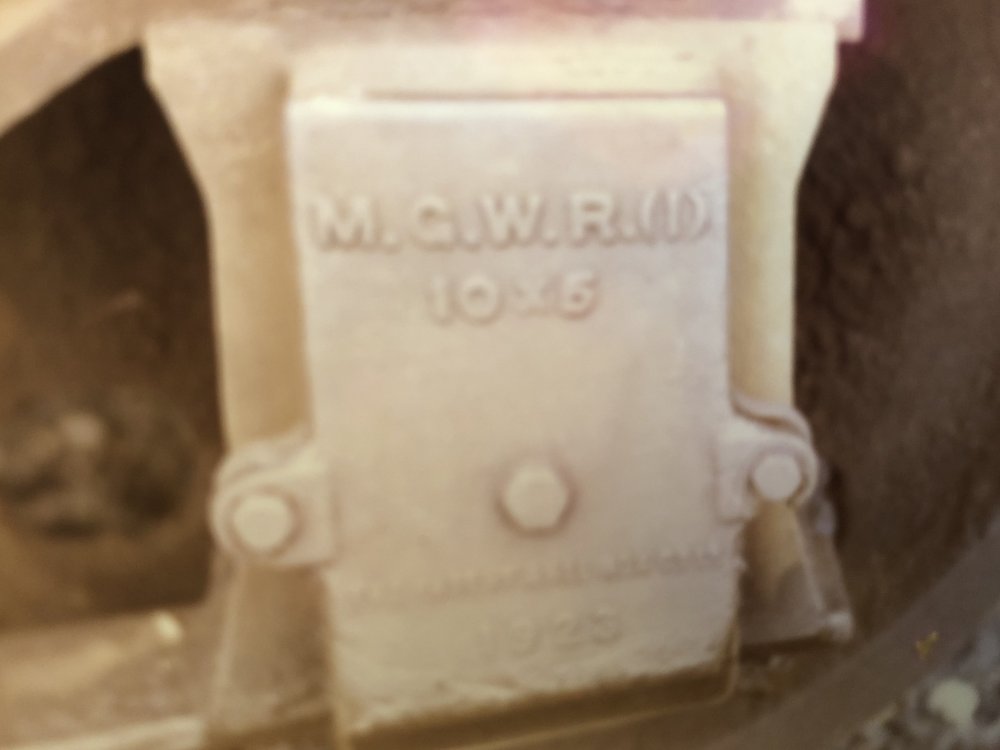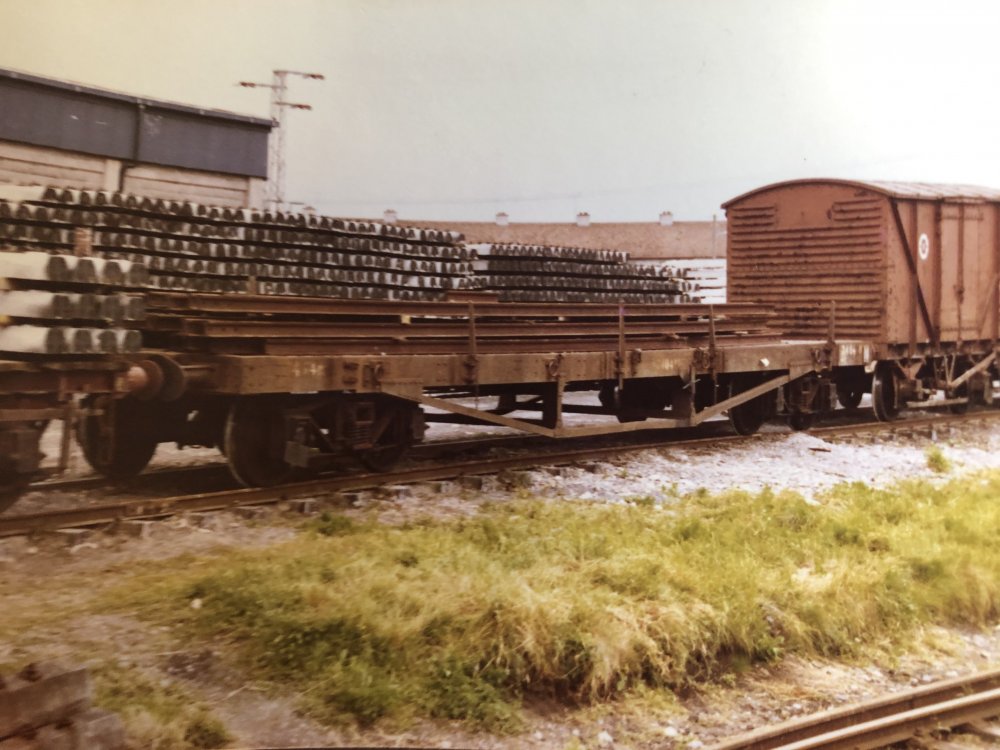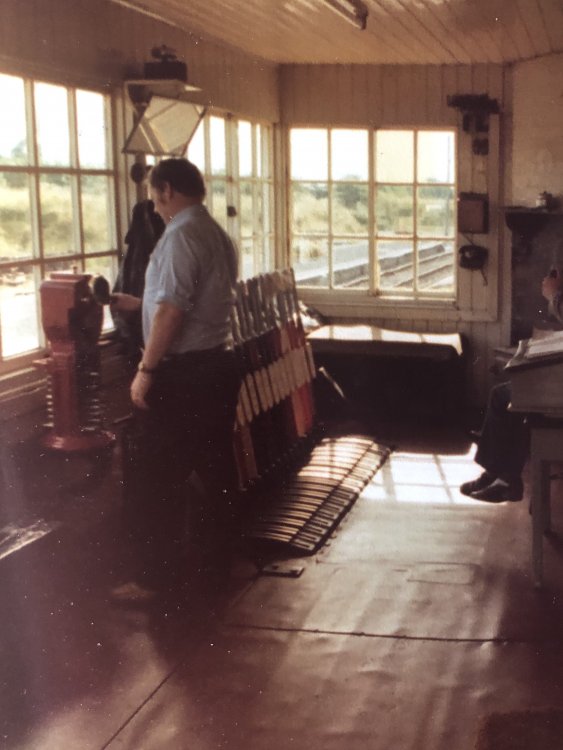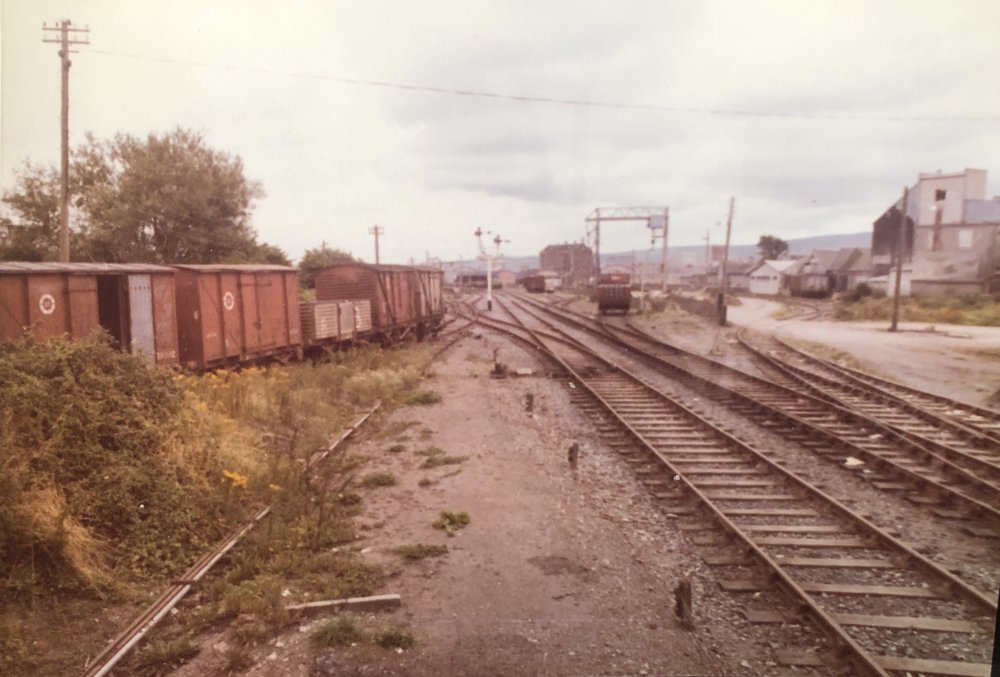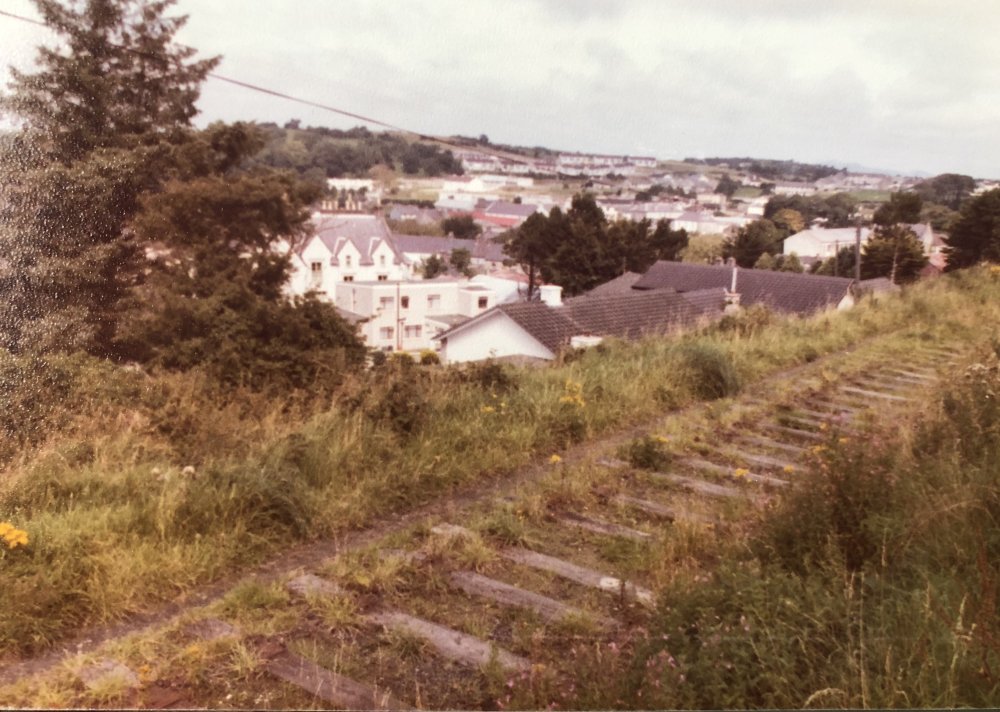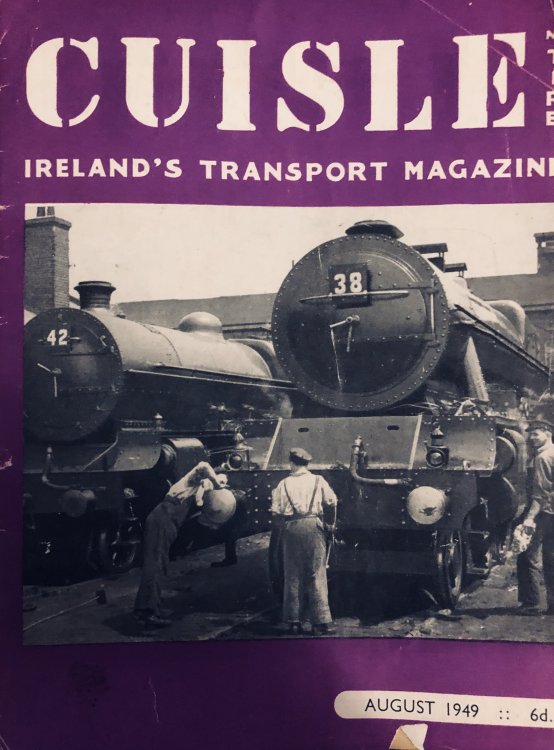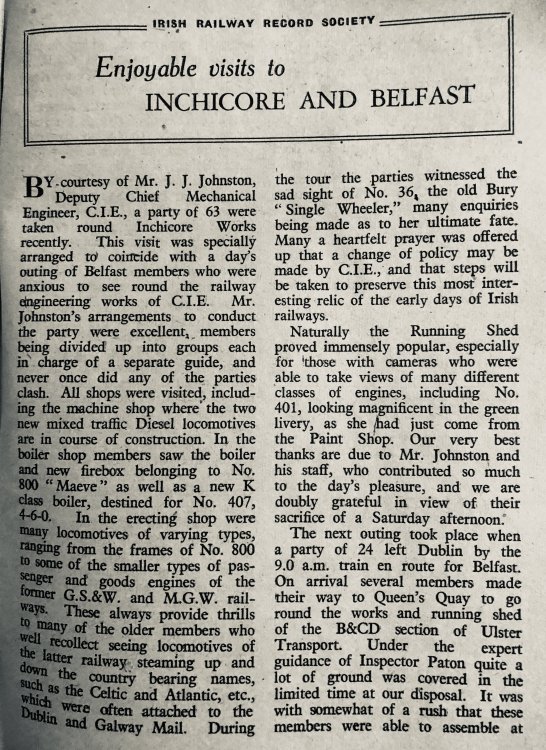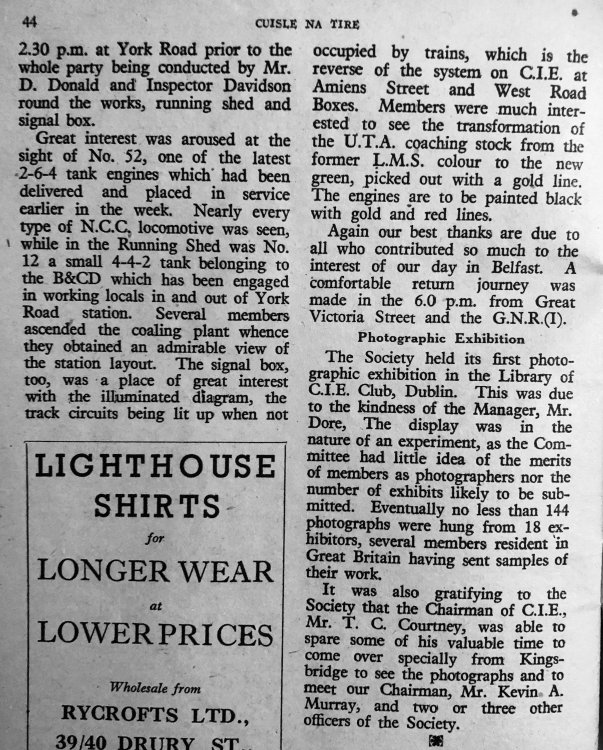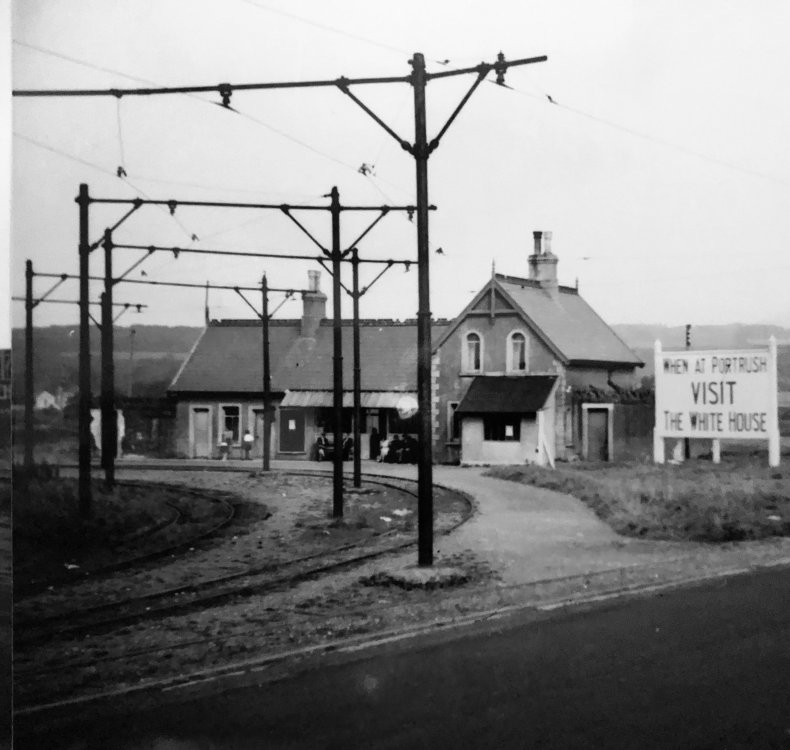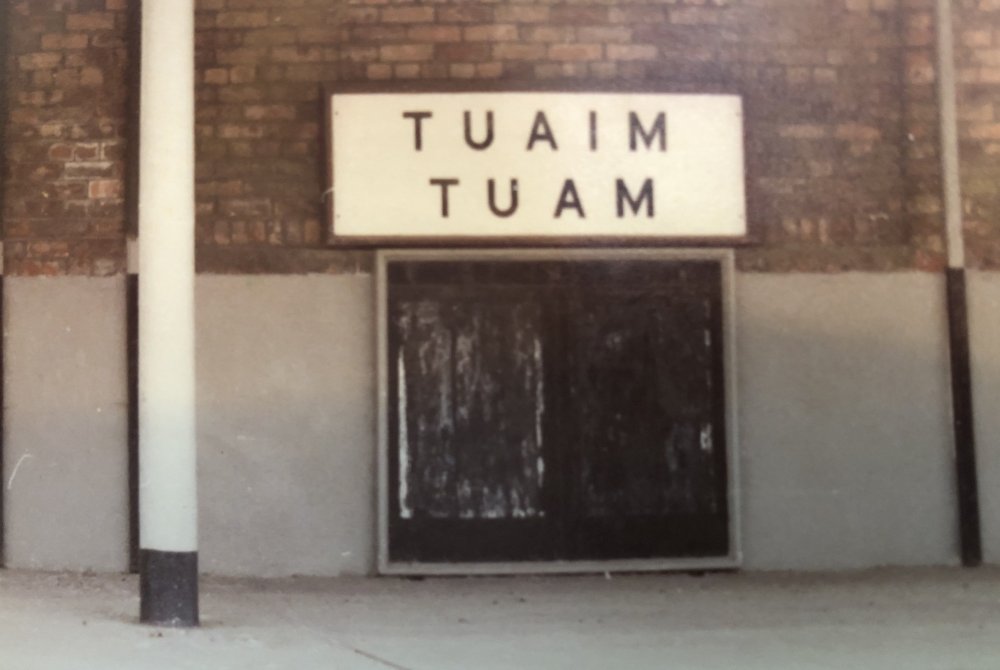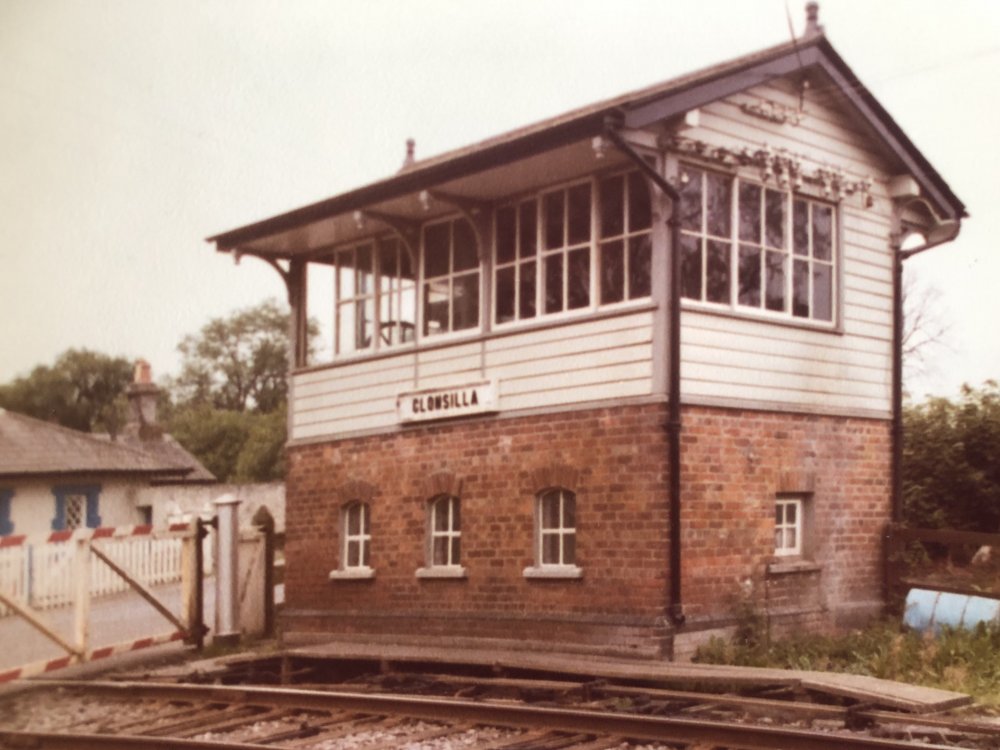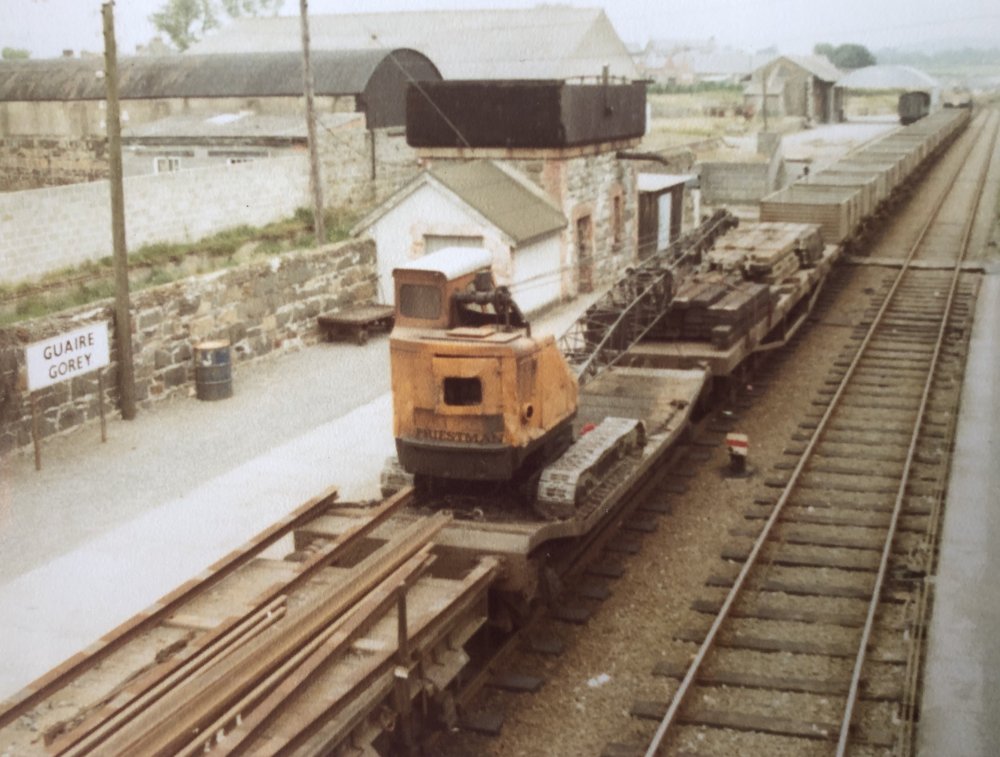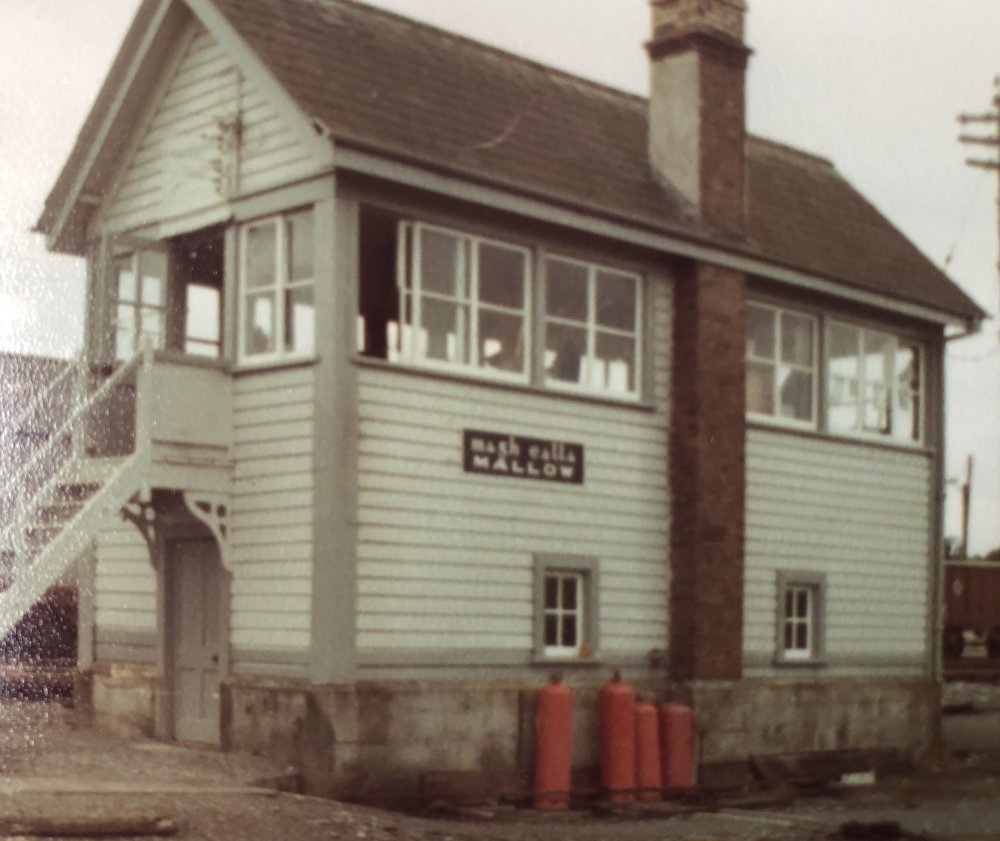-
Posts
15,831 -
Joined
-
Last visited
-
Days Won
393
Content Type
Profiles
Forums
Events
Gallery
Blogs
Store
Community Map
Everything posted by jhb171achill
-
No, not Midland land!
-
Nope Nope
-
It’s on the main line, yes. Clue: lattice window, two road loco shed (room for four locomotives), two inspection pits, and large water tower. Nope
-
I did indeed see them - in fact I saw three, I think, including the one that was scrapped. The pic isn’t Broadstone either.... No..... The year is 1970.
-
Nope! Nope!
-
-
No......
-
The bogie wagon was still there the following year. I’d say it was withdrawn quite soon afterwards as newer bogies were available.
-
Random pics from the 1970s. 1. One of my first railway pics, and certainly not one of my better ones. Anyone like to guess where? 2. My first RPSI trip, 1970, just after I joined the Society. It’s at the NCC Waterside Station in Derry. 3. The Guinness engine, Whitehead, 1972. 4. Ex-GSWR coach 1287 at Claremorris, 1970. Used as crew coach. Now it is the “tarry” at Downpatrick. 5. B109, Inchicore, 1977, withdrawn. 6. The last Midland bogie coach in existence at North Wall Goods Yard, 1976. 7 & 8. The last Midland wagon in use, a PW rail wagon. North Wall, 1976. 9. Bagenalstown Cabin, 1977.
-
AHHH! That explains my disquiet about the curve and the wall..... good spot indeed! Another way of telling which tour it was, was the fact that the locomotive was spruced up and buffers painted white or silver, and smokebox door hinges likewise. As can be seen, it was also cleaned and polished within an inch of its life. By 1966, steam engines were NEVER that clean! I stand to be corrected on this, but I think that the cleaning etc. was done by, or assisted by, the youthful members of the fledgling RPSI (ex-RBAI school railway society, or Drew Donaldson Society!).
-
I thought Drogheda too at first, and it remains my best guess, though the platform wall didn't look quite right. The bus on the left would certainly fit the bill, though. The curve doesn't look sharp enough, yet at that stage of the game, with no Enniskillen or Clones any more, the three tracks between the platforms could hardly be anywhere else.
-
You can - there's a train from Killarney to Tralee & back every 2 hours or so....
-
The Deltic in Ireland - Accurascale Exclusive Announcement!
jhb171achill replied to Warbonnet's topic in News
It got to Warp 10.7 near the North Junction...... it was being filmed from the air by the Concorde, but it left the aeroplane behind..... that's why there are no pics of it with its 18-bogie load. -
The Deltic in Ireland - Accurascale Exclusive Announcement!
jhb171achill replied to Warbonnet's topic in News
For the Derry to Londonmagherafelt service? -
The Deltic in Ireland - Accurascale Exclusive Announcement!
jhb171achill replied to Warbonnet's topic in News
No. 8118, "Shergar" was scrapped many years earlier, after an unfortunate incident somewhere along the INW line...... -
The Deltic in Ireland - Accurascale Exclusive Announcement!
jhb171achill replied to Warbonnet's topic in News
When I was involved with the Downs of Patrick, one 1st April we put the word about that a fish had been found in the water tower, blocking the outlet, and this had been noticed by the fireman who noticed a much reduced flow when he was watering No. 3 prior to a day's shunting or something. Investigation found the fish, which it was reckoned had been dropped by a heron flying overhead which had dropped it, having caught it in the River Quoile moments earlier....! The number of people who believed it would astound you....... Then there was the new livery for E421..... -
“Forgotten fields”! Along the Westport Quay line, 1978; lifting slowly in progress. And Tralee’s Rock Street goods yard in 1977. It just occurs to me now - WHY didn’t I put that in “Rails Through North Kerry”!
-
The Deltic in Ireland - Accurascale Exclusive Announcement!
jhb171achill replied to Warbonnet's topic in News
The 2 on the right and one at the back didn’t put hands up..... -
The Deltic in Ireland - Accurascale Exclusive Announcement!
jhb171achill replied to Warbonnet's topic in News
It’s...... Wednesday!!! -
More from my pile of comics..... This will be of interest to those of us who are IRRS members. I’ve always been amused at the somewhat quaint descriptions of IRRS tours or trips as “outings”, as if we’re being let out for the day!
-
The Deltic in Ireland - Accurascale Exclusive Announcement!
jhb171achill replied to Warbonnet's topic in News
I'll take 9 3/4 of them please! Can I pay in loo rolls? -
For me, it was early-age indoctrination due to family on both sides. Both grandfather and father started life on the GSR, the latter moving to the LMS in England, then NCC, then GNR and ending up with the UTA. (No doubt they stencilled "U T" on him somewhere....!). My mother worked in GNR dining cars and then the GNR's Bundoran hotel...... other relatives emigrated and worked for railway administrations in the Gold Coast, as it was called, South Africa and Argentina! And closer to home, the timetabling department of the Dublin United Tramways Co........ So I hadn't a hope of doing anything else as a hobby!
-
Bushmills station, 1947 This was taken by Snr., while perched on the back of a leprechaun, who had no day-glo vest. Ahhhh, I’m only joking. It’s 1st April. The leprechaun DID have a day-glo vest.
-
More nameboards. Mallow is a PAINTED GSR one, like that still existing in very recent years on the cabin at Cherryville Junction. As such, and on account of the word “Mallow” being a short word, it’s in a more “stretched-out” style of writing. Clonsilla is interesting. On the face of it, it’s a Midland sign - BUT - the Mudland usually didn’t have just the station or location name. They typically had “CLONSILLA STATION SIGNAL CABIN”. So - is this MGWR or very early GSR! The one of Gorey shows the station nameboard, as standard CIE practice, in the 1980s - plus, in this case, a PW train.
.png.c363cdf5c3fb7955cd92a55eb6dbbae0.png)

